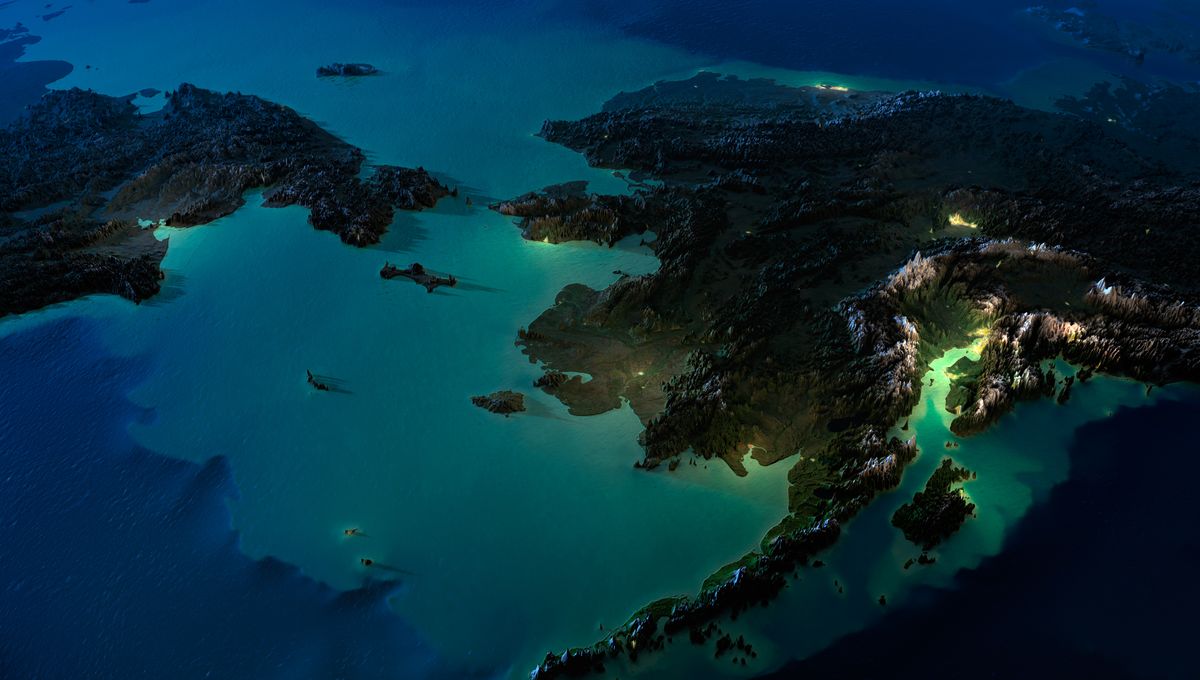
The Bering Land Bridge was a strip of land that once connected Asia to Alaska. Now, scientists have discovered that it emerged around 35,700 years ago, later than once previously thought.
The Earth is constantly changing, and in the past, there have been many ice age cycles. Ice ages come with the large formation of ice sheets, which causes a global drop in sea levels as the water is stored in these sheets. When the ice sheets melt, this causes the sea levels to rise.
This drop in sea levels can reveal land strips, as was the case of the Bering Land Bridge. This land strip was one of particular human historical significance during the Last Glacial Maximum (the last ice age’s peak), as it was a way that humans migrated from Asia to North America.
When the ice sheets melted, this land became flooded again. Nowadays, it is now a passage of water that connects the Arctic and Pacific Oceans and is called the Bering Strait.
The timing of human migration is unresolved, and researchers previously thought that the Bering Land Bridge emerged long before the Last Glacial Maximum. However, the results of a recent study give more clarity on the timeline, saying that the Land Bridge only appeared 35,700 years ago. These results indicate that the human migration window was a lot shorter than people originally thought.
Scientists reconstructed the history of the Arctic Ocean by looking at the nitrogen isotopes that were preserved by ancient marine plankton located in seafloor sediment cores. These cores were located in three locations in the western Arctic Ocean. These samples were then investigated to look at the nitrogen compositions which could indicate when the Bering Strait was flooded.
“There were two major challenges, with the first just getting the material. To conduct our analyses, we needed sediments from the bottom of the Arctic Ocean. These sediments were collected by an ambitious icebreaker expedition to the North Pole back in 1994.” Jesse Farmer, a postdoctoral researcher at Princeton University who led the isotope analysis, told IFLScience.
“The second challenge was the analysis protocol itself, which I like to describe as inspired by Jurassic Park! For each measurement, we separated out several thousand microscopic fossils of plankton that used to live in the ocean surface from the sediments. We extracted organic matter from their fossils and converted the nitrogen in this fossil organic matter to a nutrient (nitrate). Next, we fed that nutrient, which came from the fossils, to a bacteria, which converted the nitrogen into a gas (nitrous oxide). And finally, we measured ratios of nitrogen isotopes on that gas. This isotope ratio told us whether the Bering Strait was flooded or exposed as a land bridge.”
These results were then compared with sea level models that were based on different scenarios for the growth of the ice sheets.
“The exciting thing to me is that this provides a completely independent constraint on global sea level during this time period,” Tamara Pico, assistant professor of Earth and planetary sciences at UC Santa Cruz, who is one of the corresponding authors of the paper, said in a statement. “Some of the ice sheet histories that have been proposed differ by quite a lot, and we were able to look at what the predicted sea level would be at the Bering Strait and see which ones are consistent with the nitrogen data.”
This study has major implications for the scientific community.
“Because the level of the ocean at the Bering Strait is affected by global sea level, our results require much higher global sea level in the time period immediately prior to the last ice age than previously thought. A longstanding idea is that the big terrestrial ice sheets of the last ice age grew very slowly, but melted quickly. Our results suggest that the ice sheets of the last ice age grew about as quickly as they melted (that is to say, they grew faster than previously thought). This raises a whole host of interesting questions about what controls the growth of large ice sheets.” Farmer told IFLScience.
This study also indicates that there was a less direct relationship between climate and global ice volume than what was originally thought.
The paper is published in PNAS.
Source Link: Bering Land Bridge Was Established Later In The Ice Age Than Scientists Thought